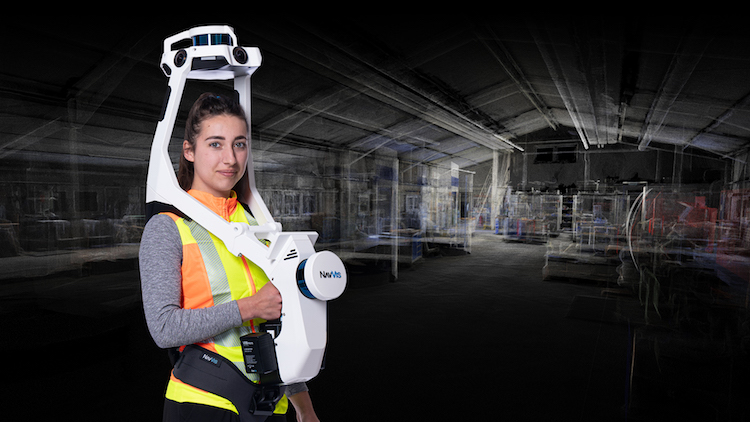
Investing in mobile mapping technology is necessary for businesses to be seen as innovators and to establish an edge.
That’s one of the results highlighted in a state of the nation survey from NavVis.
Nearly three-quarters (71%) of the industry respondents said investing in mobile mapping technology is “essential” for enabling an innovator image and establishing a competitive edge. Nearly the same number (69%) agreed that mobile mapping devices will help in “significantly” changing workflows and growing business.
State of Mobile Mapping 2022 was produced in conjunction with BIMplus, Lidar News, Lidar Magazine, the American Surveyor, GoGeomatics, GIM International, Geo Week, Spatial Source and GeoConnexion. It garnered responses from 235 construction professionals. Almost a third (32%) came from the US, followed by Canada (8%) and the UK (5%).
Nearly four-fifths (78%) of respondents believed that mobile mapping technologies offer the potential to provide their end-clients with new services. That highlights a growth in confidence: in the 2021 survey less than two-thirds (62%) felt the same.
When asked to cite the most important features in a scanner, point cloud accuracy and high-quality imagery were among the top three priorities for more than two-thirds (68%). Close to half (48%) ranked scanning speed and the time on site among their top three priorities.
The data suggests that construction professionals are looking to mobile models to build up a mixed fleet of devices. Existing ownership rates of total stations, terrestrial laser scanners, GNSS rover and drones are above 50%. Backpack and mobile scanners are set to surpass 50% in the coming two years.
How is the technology being used?
Respondents were asked about how they used scanning technologies in their day-to-day work. As with the 2021 survey, most respondents (60%) worked on topographic and site surveys. However, in 2022, construction sites overtook residential and office buildings to become the second most common mapping environment.
As-built documentation 3D/BIM and 2D remain the most common scanning use cases for the industry, followed by construction verification. The top three use cases maintained their positions compared to the previous year. But usage of all three decreased slightly, in particular 3D/BIM, which dropped from 72% in 2021 to 66% in 2022.
NavVis CEO and co-founder Dr Felix Reinshagen said “We have seen that mobile mapping is driving significant positive change in a variety of industries – from surveying to laser scanning to AEC and more. The results in the report are confirmation of that. We hope this report gives an insight into the exciting world of mobile mapping and what changes and innovations are coming next.”
Download the full report: http://navv.is/somm
Don’t miss out on BIM and digital construction news: sign up to receive the BIMplus newsletter.












